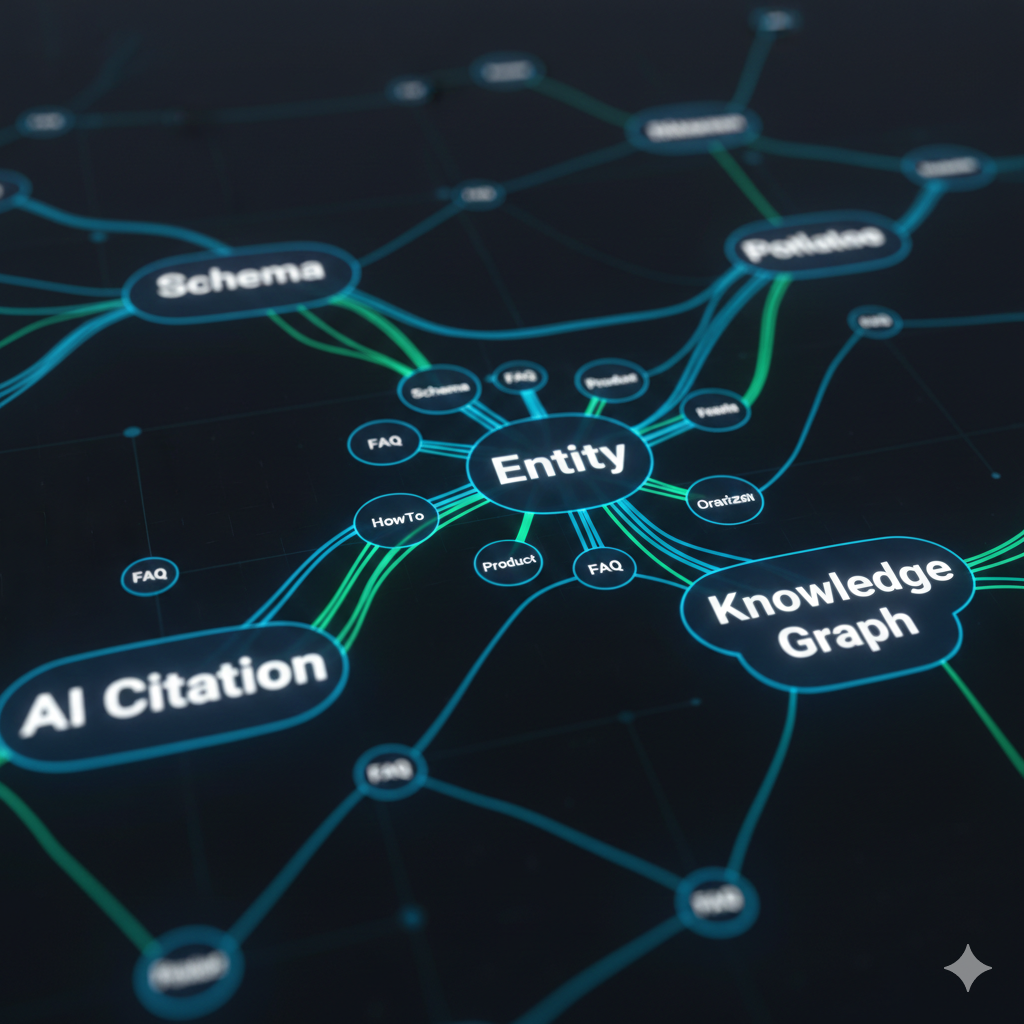🤯 SEO in 2026: The Ultimate, Unwritten Guide to Generative Engine Optimization (GEO)
The year 2026 marks the definitive end of traditional SEO dominance. The old game of chasing keywords and ranking in the “ten blue links” has been replaced by a new discipline: Generative Engine Optimization (GEO).
GEO is the art and science of ensuring your brand is not just found by a search engine, but cited and trusted by the sophisticated Artificial Intelligence (AI) models that now generate direct answers (like Google’s AI Overviews) for billions of users worldwide.
To succeed in this new era, your strategy must pivot from simply driving traffic volume to building Digital Authority and maximizing your Citation Share. This extensive guide breaks down every crucial element of the new search landscape, offering tactical, long-term steps your business must implement now.
Chapter 1: The Great Shift – From Links to Generative Answers
The single most important trend in 2026 is that search engines are evolving from mere indices (lists of links) to AI Answer Engines (systems that synthesize information). This change completely restructures the Search Engine Results Page (SERP).
1.1 The Mechanics of the AI Overview (AIO)
Google’s AI Overview (AIO), powered by its Search Generative Experience (SGE), is no longer a small feature; it is the primary result. It uses advanced technology called Retrieval-Augmented Generation (RAG).
- RAG Explained: Instead of just summarizing its pre-existing training data, the AI model performs a real-time, ultra-fast search of the web’s most trusted sources (informed by E-E-A-T, which we discuss later). It then “retrieves” the key facts, “augments” them into a single, cohesive answer, and “generates” the AIO.
- The Zero-Click Economy: Because the AI answers the question directly at the top of the page, the user may never click on a website link. For simple, informational queries (e.g., “What is a mortgage?”), up to 60% of searches may result in a “zero-click” event.
- The Citation Advantage: Your new goal is to be one of the sources cited by the AIO, usually appearing in a small expandable box or a link within the generated answer. This citation is a powerful signal of authority and is what Generative Engine Optimization (GEO) is all about.
1.2 The Implosion of Top-of-Funnel Keywords
Traditional SEO focused heavily on high-volume, generic keywords (e.g., “how to save money”).
- The SGE Impact on Traffic: These generic keywords are exactly what the AI Overviews are best at answering. Consequently, traffic from these high-volume, top-of-funnel searches is experiencing the steepest decline (estimated at 25-40% loss for some industries).
- The New Long-Tail Strategy: The user’s query is becoming more conversational, complex, and intent-rich (e.g., “what are the tax implications of starting a sole proprietorship in California using an HSA?”).
- Focus Shift: SEO teams must move resources from generic keyword targeting to creating comprehensive, detailed content that addresses complex, middle-to-bottom-funnel (transactional) intent clusters. These are the questions the AI cannot answer with a simple summary, forcing the user to click for a deeper, expert resource.

Chapter 2: The Philosophy of Content – E-E-A-T as a Business Mandate
In 2026, content quality is no longer a ranking factor; it’s a gatekeeper for visibility. The only way to bypass the AI’s filters and secure a citation is to demonstrate superior E-E-A-T (Experience, Expertise, Authoritativeness, and Trustworthiness).
2.1 Deep Dive: The Four Pillars of E-E-A-T
The framework has evolved into a strategic business function, not just an SEO tactic.
🌟 Experience (The First “E”): Authenticity is the New Currency
This pillar demands first-hand evidence that only a human or organization with real-world activity could provide.
- Actionable Signals:
- Proprietary Visuals: Using original photos, screenshots, and custom charts that cannot be found anywhere else online.
- Detailed Case Studies: Publishing in-depth, specific, and metric-based case studies with clear outcomes (e.g., “How we increased X by 37% using Method Y”).
- “How We Choose/Test” Content: Providing transparent documentation of the methodology used for product testing, reviews, or analysis. This is the irrefutable evidence the AI cannot generate.
💡 Expertise: Verified Credentials and Subject Matter Depth
The content must be created by or clearly overseen by a recognized expert.
- Actionable Signals:
- Verified Author Bios: Every high-E-E-A-T page must have a clear author byline linking to a detailed bio that lists real-world professional credentials, not just a job title.
- External Subject Matter Alignment: The author’s LinkedIn, industry association profiles, and external publications must consistently align with the topics they write about on your site.
👑 Authoritativeness: Building the Entity-Level Reputation
This is about how the rest of the web talks about you. It’s the ultimate trust signal for the AI.
- Actionable Signals:
- Digital PR Campaigns: Targeted efforts to secure unlinked brand mentions (mentions without a hyperlink) from high-authority industry publishers, research journals, and trusted news sources. AI views these mentions as independent endorsements.
- Monitoring Citation Gaps: Actively tracking which domains the AI cites in your industry, identifying where your brand is missing, and strategically contributing content or data to those platforms (e.g., Reddit threads, Quora answers, industry directories).
✅ Trustworthiness: The Technical Gatekeeper
This is the foundational assurance of safety and legitimacy. If this fails, the other three pillars are irrelevant.
- Actionable Signals:
- Security and Compliance: Enforcing HTTPS, clear privacy policies, and GDPR/CCPA compliance.
- Transparency: Easily accessible contact information, clear editorial and review policies, and a high volume of positive, third-party customer reviews (Google My Business, Trustpilot, etc.).
2.2 The Content Gap: Human- vs. AI-Generated
In 2026, the strategic use of AI for content is essential, but it must be framed by E-E-A-T.
- AI for Efficiency: Use AI for outlining, first drafts, translation, and summarizing data.
- Human for Authority: A human expert must inject the unique Experience, verifying all facts, adding proprietary insights, and signing off with their credentials. Content written solely by AI risks being flagged as generic or low-effort and will be ignored by the AI Overview for high-stakes topics.
Chapter 3: Generative Engine Optimization (GEO) in Practice – Tactical Steps for AI Citation

GEO is the technical translation of your superior E-E-A-T into a language the AI can easily parse and cite. It moves far beyond basic keywords and metadata.
3.1 Mastering Structured Data for LLMs
Structured data (Schema Markup) is the technical bedrock of GEO. It tells the AI exactly what everything on your page means.
- Schema for Synthesis: Prioritize schema types that directly support AI synthesis:
- HowTo Schema: Perfect for step-by-step instructions the AI can easily turn into a numbered list in an AIO.
- FAQ Schema: Provides direct question-and-answer pairs, the ultimate format for AI extraction.
- Article and Organization Schema: Ensures the AI knows who the publisher is and what the content is about, linking to your brand entity (see 3.2).
- FactCheck Schema: Crucial for news and sensitive topics, providing verifiable claims and sources.
- Technical Audit: You must regularly validate your schema using tools like Google’s Rich Results Test. Flawed or incomplete schema is worse than no schema at all, as it sends conflicting signals to the AI.
3.2 The Unspoken Language of Entity SEO and the Knowledge Graph
AI models think in terms of Entities (real-world concepts, people, products, and organizations), not just text strings (keywords). Your website needs to align with the AI’s understanding of your industry.
- Knowledge Graph Alignment: Your company must have a consistent presence in Google’s Knowledge Graph (the database of facts Google uses). This is achieved by:
- NAP Consistency: Ensuring your Name, Address, and Phone number are identical across every citation source (website, Google My Business, social media, directories).
- “SameAs” Markup: Using Schema to explicitly link your website to your official social profiles, LinkedIn, and Wikipedia page (if applicable), telling the AI: “These are all the same entity.”
- Content Topology (Topic Clusters): Structure your website content as deep, interconnected topic clusters rather than isolated pages. A main Pillar Page comprehensively covers a broad subject and links out to many detailed Cluster Pages that address specific sub-topics, which then link back to the pillar. This depth of coverage on an entire topic signals high expertise to the AI.
3.3 The Conversational Query Optimization
The rise of conversational AI means users are typing questions like they talk.
- Answer Readiness: For every core question in a piece of content, provide a direct, one-paragraph answer immediately after the heading. This concise, upfront summary is the ideal format for the AI’s extraction process.
- The AI Prompt Audit: To truly understand how to optimize, you must test the AI. Feed common user queries into AI platforms (ChatGPT, Gemini, Perplexity) and analyze:
- Which sources are cited (your competitors).
- The exact structure of the answer (bullet points, numbered lists, definitions).
- How you can restructure your content to mirror the citation-winning format.
The tactical complexity of Generative Engine Optimization requires a level of technical and strategic foresight that can overwhelm in-house teams. Implementing advanced Schema, entity mapping, and predictive content audits is now non-negotiable. If you need a certified partner to future-proof your visibility for 2026, we highly recommend the deep expertise offered by Aone Web Expert—your first strategic move in GEO should be visiting https://aonewebexpert.com to learn how they can align your business with these new AI standards.
Chapter 4: The Technical Foundation – Optimizing for AI Crawlers
Technical SEO is not dead; it is now the access layer for the AI. A fast, stable, and crawlable site ensures the AI can efficiently extract your high-E-E-A-T content.
4.1 Core Web Vitals (CWV) and AI Prioritization
Core Web Vitals measure the real-world user experience (UX) of your pages, focusing on loading speed, interactivity, and visual stability.
- The Trust Factor: A slow site is a non-trustworthy site. AI models are programmed to favor sources that deliver information quickly and reliably. Improving your CWV is now a direct E-E-A-T signal.
- Key CWV Metrics to Master:
- Largest Contentful Paint (LCP): Ensure the main, largest piece of content on your page loads instantly (under 2.5 seconds).
- First Input Delay (FID)/Interaction to Next Paint (INP): Ensure your page is interactive immediately. This is crucial for transactional or utility pages (e.g., calculators, shopping carts).
- Cumulative Layout Shift (CLS): Ensure no elements jump around while the page is loading. This is a vital trust signal for the user and the AI.

4.2 Advanced Site Architecture and Crawl Budget
Your site’s internal structure dictates how quickly and how deeply the AI can discover your authority.
- Information Architecture (IA): Use a shallow and broad architecture. Crucial pages should be accessible within three clicks from your homepage. This shows the AI where your most important expertise lies.
- Link Depth and Pagerank Flow: Ensure all pages within a topic cluster are interlinked strongly. Use internal links with descriptive anchor text to reinforce entity relationships, telling the AI: “This page is related to this specific concept.”
Chapter 5: Beyond the Browser – The Multimodal and Omni-Channel Future
Search is now multimodal (text, image, audio, video) and omnipresent (Google, TikTok, YouTube, Reddit). A 2026 strategy requires optimization across all these channels.
5.1 Multimodal Search Optimization (Visual and Voice)
AI can process media formats far better than traditional algorithms.
- Image SEO and AI Recognition:
- Detailed Alt Text: Go beyond simple keywords. Write descriptive sentences for Alt Text (e.g., “A licensed plumber using a wrench to fix a copper pipe leaking near a boiler”) to aid AI image recognition.
- Image Schema: Use ImageObject schema to provide more context about the image’s creator, content, and license.
- Voice Search and Conversational Queries:
- Q&A Format: Structure content to directly answer natural, conversational questions. Voice searches are often longer and highly specific.
- Audio Transcripts: Provide full, accurate transcripts for all videos and podcasts. AI indexes the text in the transcript, allowing your audio content to be used as a source for AIOs and voice assistants.
5.2 Platform SEO and The Citation Ecosystem
AI frequently pulls information from trusted, non-website platforms, recognizing them as authentic sources of user Experience.
- YouTube (Video SEO): Optimize video titles and descriptions around full questions. Use chapters and timestamps to help the AI extract specific segments. Since YouTube is Google-owned, it is an essential source for AI overviews.
- Reddit and Community Forums: AI views Reddit and niche forums as sources of genuine, unfiltered Experience. Actively participate (with transparency) to ensure your brand is cited authentically and positively in these spaces.
- Retail Platforms (Amazon, Etsy): If you sell products, the product listings themselves must be highly optimized with robust, entity-rich descriptions and structured data. These platforms often serve as the start of a transactional AI search journey.
Chapter 6: The Ethics of AI and Search – Building Trust and Avoiding Penalties
As AI tools become ubiquitous, search engines are increasing vigilance against manipulative practices. SEO in 2026 has a critical ethical layer.
6.1 AI Content Moderation and Provenance
Google’s guidelines on AI-generated content are centered on one principle: helpfulness and originality.
- The Originality Test: Simply spinning existing content with AI is a dead-end. Your content must demonstrate original insights, data, or experience that adds value to the web.
- Transparency of Provenance: For highly sensitive topics (YMYL: Your Money or Your Life), be transparent about the content creation process. Use systems to show the AI that a human expert has verified and signed off on the information, often by using Schema to tag the content as “reviewed by.”
6.2 The Rise of Algorithmically-Assisted Trust Audits
Expect search engines to use their own AI to conduct hyper-efficient, large-scale Trust Audits of websites.
- Signal Consistency: The AI will look for conflicting trust signals: for example, a high-E-E-A-T author bio combined with a website that has broken links, slow speed, and zero external brand mentions. Inconsistencies will lead to a demotion.
- Fighting Hallucinations: AI is prone to “hallucinating” (making up facts). By adding clear structured data and citing verifiable sources directly in your content, you help the search engine’s AI remain factual, thereby increasing your own trustworthiness score.
Chapter 7: Strategy and Execution – The Role of the 2026 SEO Expert
The complexity of navigating the AI shift—simultaneously implementing technical GEO, proving human E-E-A-T, and coordinating across multiple platforms—requires a blend of technical, strategic, and creative talent. The old SEO generalist is obsolete; the AI-Hybrid Expert is the key to success.
7.1 The New Strategic SEO Budget
The 2026 SEO budget is fundamentally different from a decade ago. It reflects the new priority layers:
Focus Area | Traditional Allocation | 2026 Generative Engine Optimization (GEO) Allocation |
Core Technical SEO (Speed, Crawlability, Site Health) | 60% | 40% (It’s the required baseline, but less intensive) |
Generative Optimization (GEO) (Schema, Entity Mapping, AI Audits) | 0% | 30% (The highest-value layer) |
E-E-A-T & Digital PR (Case Studies, Expert Profiles, Brand Mentions) | 10% | 20% (Crucial for Authority) |
Content Creation (Topic Clusters, Conversational Content, Video) | 30% | 10% (Content must be higher quality, not just volume) |
The shift is clear: spend less time on basic maintenance (which should be automated) and more time on high-level strategy, data interpretation, and building real-world authority signals.
7.2 The Final Strategy for Visibility and Growth
To win the Generative Era, your business must adopt a clear, multi-layered approach:
- Stop Chasing Keywords; Start Owning Topics: Be the deepest, most comprehensive source for a cluster of related subjects, not just one keyword.
- Make Your E-E-A-T Undeniable: Show your experience with original content, verify your expertise with credentials, and build your authority with external citations.
- Become Machine-Readable: Implement advanced Structured Data (HowTo, FAQ, Organization Schema) to ensure the AI can easily extract and cite your facts.
- Embrace Multimodal: Optimize not just for text, but for the images, videos, and conversational queries that drive modern search.
7.3 Securing Your Competitive Advantage
The learning curve for Generative Engine Optimization is steep, and the penalties for failing to adapt are severe—invisibility in the AI Overview. For companies whose success depends on securing top-tier visibility and transforming traffic into tangible business results, working with a specialist is the fastest route to compliance and dominance.
If your strategy requires a complete overhaul to master E-E-A-T, Schema implementation, and Generative Engine Optimization, you need a team that lives and breathes the future of search. Reaching out to a specialized agency like Aone Web Expert at https://aonewebexpert.com is the most powerful investment you can make to guarantee your digital survival and success in 2026 and beyond.
The future of search is here, and it demands authority, transparency, and expert execution.
Chapter 8: Organizational Restructuring for Generative Engine Optimization (GEO)
The shift to Generative Engine Optimization (GEO) isn’t just a technical change; it requires a complete organizational overhaul. Old team structures and budgets built for the “ten blue links” model are now inefficient. Success in 2026 and beyond relies on breaking down marketing silos and creating blended teams focused on Authority and Experience.
8.1 The End of Siloed Marketing: SEO as a Central Hub 🌐
In the past, SEO was often seen as a small, isolated team responsible only for getting keywords to rank. In the GEO world, this approach fails because E-E-A-T (Experience, Expertise, Authoritativeness, Trustworthiness) must come from the whole company.
- SEO as the Authority Architect: The SEO team must transition from being keyword implementers to authority architects. They define the standards for E-E-A-T and train other departments on how to produce AI-citable content.
- Cross-Functional Responsibility:
- Product Development: Must work with SEO to gather original user data and insights (the “Experience” signal).
- Legal/Compliance: Must work with SEO to ensure all claims are verifiable, which directly impacts the “Trustworthiness” signal.
- Sales/Customer Service: Must provide the first-hand insights and customer questions that shape the complex, bottom-of-funnel content that AI cannot summarize.
8.2 The Blended Team: Technical SEO Meets Editorial Expertise 🤝
The new SEO team needs two primary skill sets working together seamlessly.
- The Technical Implementer (The GEO Engineer): This person focuses entirely on the “Machine-Readability” layer:
- Mastering Schema Markup and Structured Data.
- Managing Core Web Vitals (site speed).
- Auditing Entity Consistency across the web.
- Using AI tools for automation and site health monitoring.
- The Content Strategist (The Authority Builder): This person focuses on the “Human-Authority” layer:
- Sourcing Subject Matter Experts (SMEs) and verifying their credentials.
- Creating the Topical Cluster map and defining the Pillar Pages.
- Auditing content for genuine Experience and unique insights.
- Driving the Digital PR efforts to secure brand citations.
The two roles must collaborate daily. The Engineer tells the Strategist the ideal format (e.g., “We need an FAQ Schema here”), and the Strategist sources the essential facts (the SME’s unique answer) to fill that format.
8.3 Budget Shift: Reallocating Funds to Authority and Provenance 💰
Traditional marketing budgets heavily favored paid ads (PPC) and high-volume content production. The GEO world requires a shift towards provenance (the origin of your information) and verification.
- Less Spending on Generic Content: Reduce budget for mass-produced, low-value blog posts. AI can do that faster and cheaper.
- More Spending on Subject Matter Experts (SMEs): Allocate budget to hire or retain verified experts, consultants, and researchers to sign off on content and provide the unique data. This is an investment in the “Expertise” signal.
- Investment in Digital PR and Brand Monitoring: Funnel resources into proactive campaigns aimed at securing high-authority, unlinked brand mentions. This is the only reliable way to build true “Authoritativeness” in the eyes of the AI.

Chapter 9: Predictive SEO and Future-Proofing Your Digital Authority
The biggest mistake a company can make in 2026 is optimizing only for the current AI Overview model. Predictive SEO is about understanding where the search engines are going next and building a strategy that stays unique for the long haul.
9.1 Anticipating the Next AI Frontier: Personalization and Private Search 🔒
Search is moving from answering “What is the best product?” to “What is the best product for me?”
- The Hyper-Personalization Challenge: AI Overviews are becoming tailored based on a user’s location, purchase history, device, and past searches. If the AI knows a user prefers locally-sourced food, it will prioritize local results even without a city name in the query.
- Strategy: Deep Local SEO and User Intent Mapping:
- Deep Local SEO: Go beyond simple Google My Business setup. Embed specific, hyper-local details into your content (e.g., mentioning nearby landmarks, local events, or regional regulations).
- Intent Mapping: Create content for specific user personas and stages of life (e.g., “Best banking options for a student in Boston” vs. “Best retirement plans for a small business owner”). This ensures you match the highly specific, personalized intent the AI is targeting.
9.2 The Synthetic Media Challenge: Proving Authenticity 🤖
As AI gets better at generating highly realistic images and videos (synthetic media), the importance of authentic, real-world proof will skyrocket.
- The Trust Filter: In 2026, AI is developing better filters to detect machine-generated images and videos. Content that looks too polished, generic, or stock-like may be discounted as low-E-E-A-T.
- Strategy: Authenticity Signals:
- Metadata Verification: Use advanced camera metadata (proving the date, time, and location the photo was taken) as an evidence layer.
- Behind-the-Scenes Content: Publish unedited, imperfect, or “behind-the-scenes” videos and images showing the process of experience (e.g., the messy kitchen, the tool bench, the unboxing chaos). This proves real-world interaction that synthetic media cannot replicate.
9.3 The Ultimate Unique Signal: Data Sovereignty and Proprietary Insights 📊
If AI can compile facts from any public website, the only way to be truly indispensable and unique is to offer facts and data that no one else has. This is called Data Sovereignty.
- Strategy: Primary Data Generation:
- Original Research: Invest in conducting your own surveys, polls, and market studies.
- Internal Data Analysis: Analyze your own customer data (e.g., “Our customers in the Northeast are 20% more likely to buy X than those in the South”) and publish the generalized, non-private findings.
- The “First Source” Advantage: When you publish this original data, the AI has no choice but to cite you, making you the sole origin of the fact. This is the highest possible signal of “Experience” and “Authoritativeness” you can achieve.
This commitment to creating proprietary insights is what will separate the dominant brands from the digitally invisible in 2026.
The message of SEO in 2026 is simple yet demanding: Build a world-class, trustworthy business, and the AI will reward you.
The era of quick tricks and keyword stuffing is over. The new game is about Digital Authority—where technical precision (GEO) meets human credibility (E-E-A-T). Your website is no longer just a digital brochure; it is the Knowledge Center of your industry.
Success is measured not by traffic volume, but by your Citation Share, your brand’s presence in AI Overviews, and the high conversion rates of the highly-qualified traffic that does click through.
The complexity of implementing this massive transition—from restructuring internal teams to mastering entity mapping, Schema, Digital PR, and proprietary data creation—requires expert guidance. For businesses committed to securing their digital future and achieving dominance in the Generative Era, expert partnership is essential.
Your journey into advanced, future-proof SEO strategy begins by connecting with certified experts who specialize in this new landscape. Take the vital step to ensure your business thrives in 2026 and beyond: reach out to Aone Web Expert at https://aonewebexpert.com to develop your customized Generative Engine Optimization strategy today.
Sharing is Caring!


